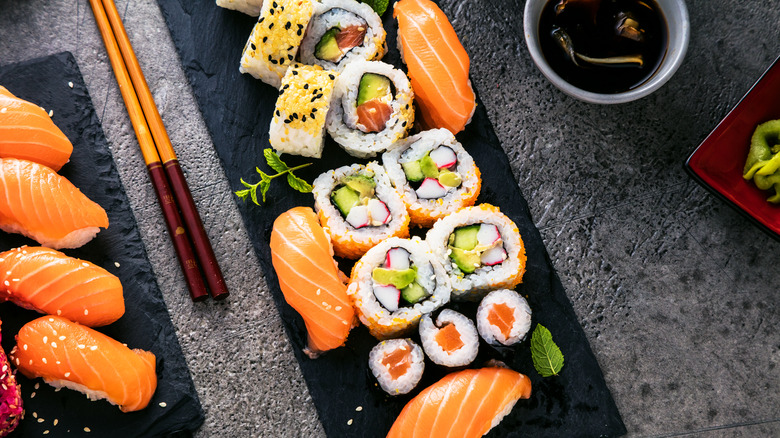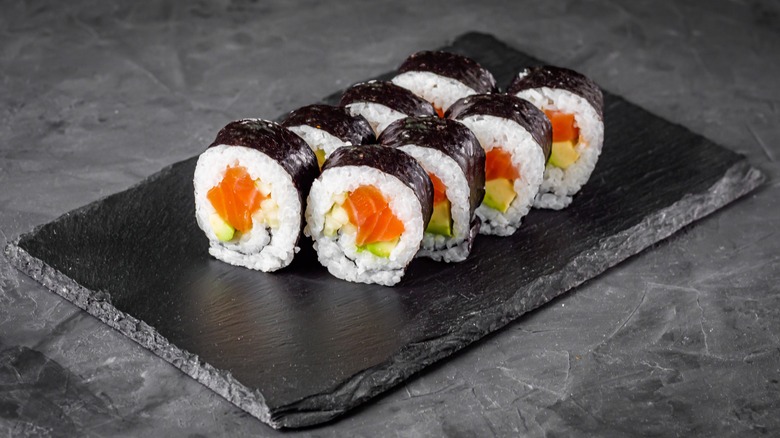Maki Vs Uramaki Sushi: What's The Difference?
Sushi is one of those versatile dishes that you can enjoy in a super simple form like a tuna roll or more elaborate versions like a dragon roll. Typically it consists of some type of raw fish, white rice, and seaweed. While this style of meal is often thought of as Japanese, many are often surprised to find out that sushi originally was first created over 1,200 years in China.
The original version consisted of fermented rice and salted fish, as a way of preserving seafood since it was harder to come by. However, the type of sushi we're most familiar with today was created by Hanaya Yohei in Tokyo, Japan, in 1824. Yohei lived close to the water, so he didn't need to preserve the fish the way it had been previously and he could make it within minutes. Today, sushi is enjoyed in all parts of the world and the predominant types we're familiar with are maki and uramaki. Here's how these two types of dishes are similar and different.
One has seaweed on the outside instead of rice
The traditional maki version of sushi is very popular in Japan, while uramaki is often preferred in America. Maki is a roll that contains fish, vegetables, and rice that's rolled into a sheet of seaweed that's also known as nori. These types of rolls can sometimes be found in bento-style lunch boxes, which often feature a plain tuna or salmon variety. Other vegetarian versions include cucumber and plum rolls. Uramaki, on the other hand, features all of the same ingredients, except the rice is on the outside instead of seaweed.
The majority of the items you'll see on a restaurant's menu in the U.S. often feature uramaki-style sushi like spider and rainbow rolls. These are also referred to as "specialty rolls" and often contain more toppings and fillings than a traditional maki-style roll like battered soft-shell crab, cucumber, avocado, and daikon sprouts. So, whether you like a simple version of sushi or a mix of flavors, there's a delicious type for all palettes. And if you're feeling adventurous, try making our California roll recipe at home, you won't be disappointed.

